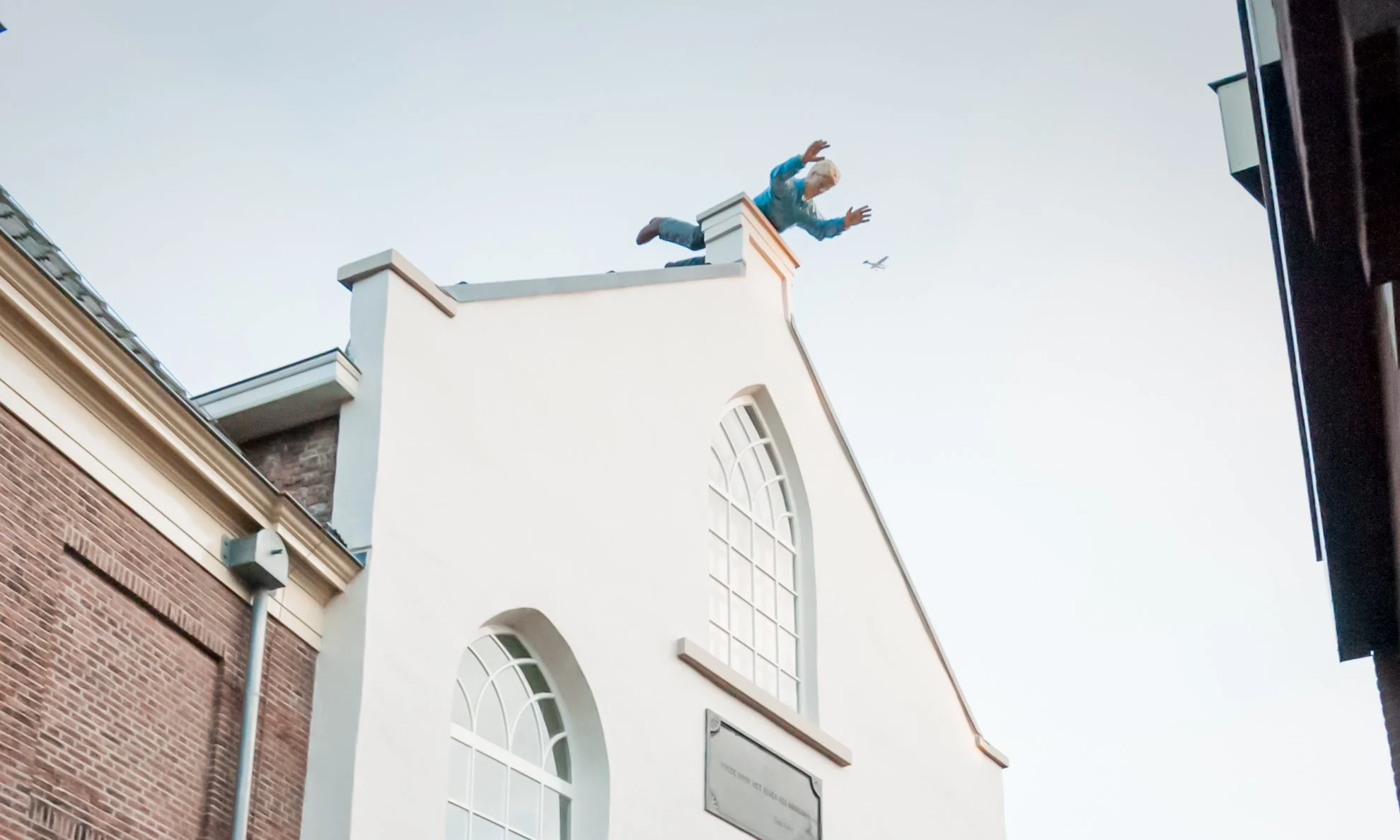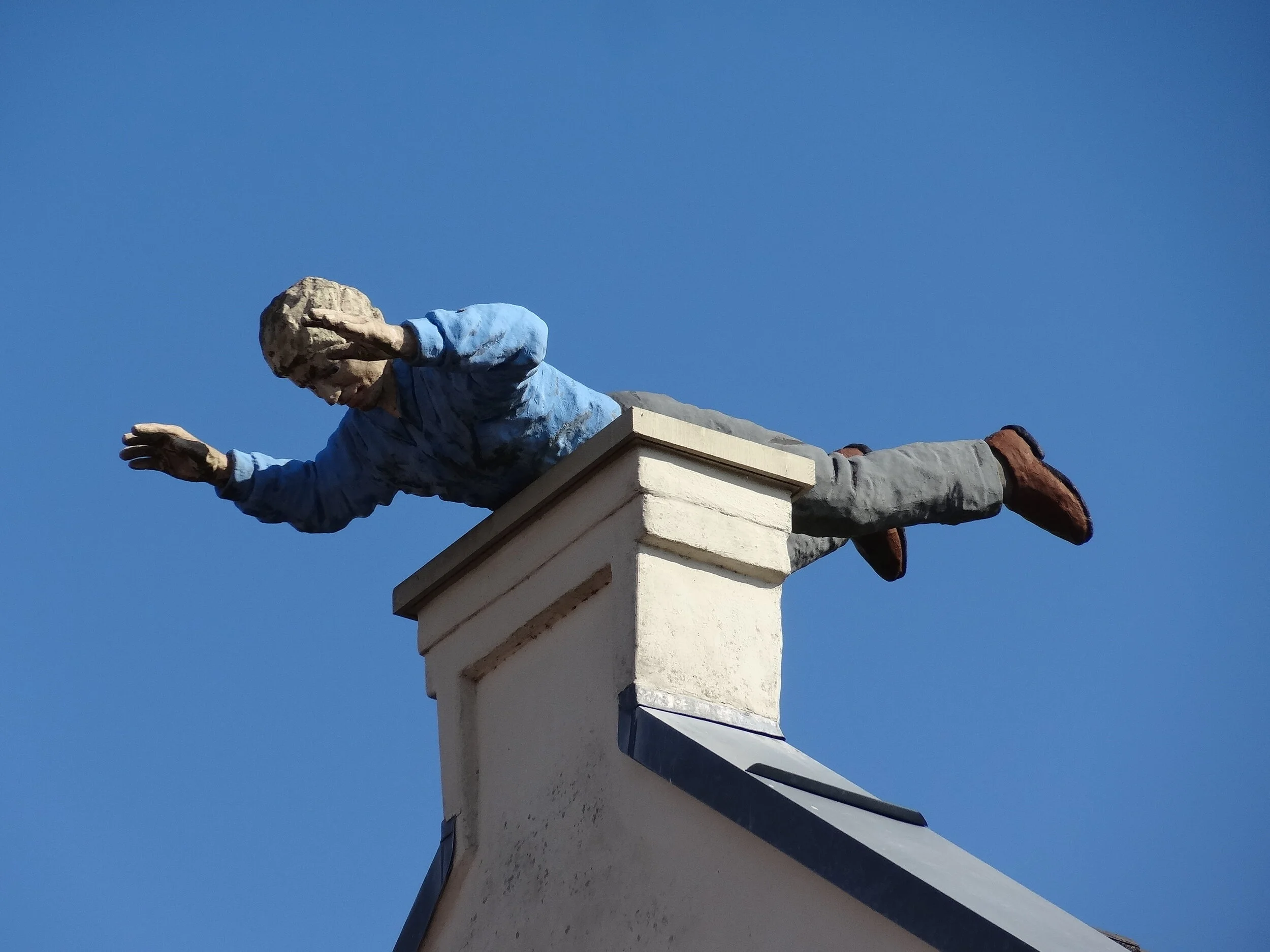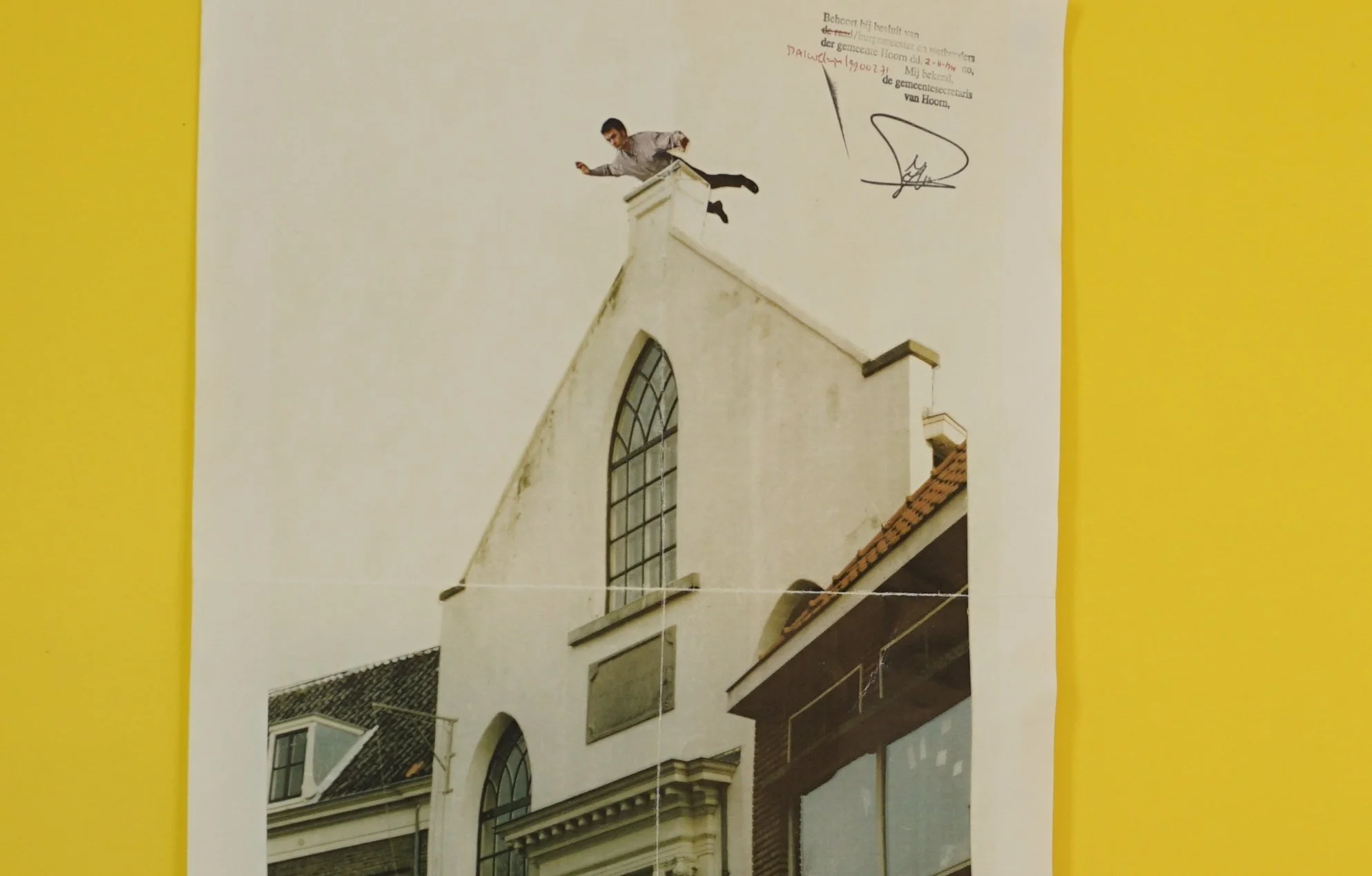
Lying Man
Sabine Käppler & Florian Göttke
The Lying Man by Florian Göttke & Sabine Käppler has stood on the ridge of the Mariakapel since 1999, where it is a real eye-catcher and landmark within Hoorn and far beyond. Inspired by the city’s many facade decorations, the artists decided to adorn the chapel’s facade with a larger-than-life man, who, does not traditionally stare ahead into the distance, but balances on his belly, looking at and greeting passers-by and visitors to Hotel Maria Kapel. What is this man doing on the roof? His outstretched arms are reminiscent of children’s futile attempts to fly. The entertaining image leaves the viewer wondering and reflecting on how we can playfully interpret, question and shape our reality.
From 1996 to 2002, the Sandberg Institute from Amsterdam used the chapel and adjacent building (the former orphanage) as an exhibition space and guest house for their students. Florian Göttke & Sabine Käppler both stayed at the Sandberg Institute 2 in 1998 and,were invited to install a sculpture for the next ten years, as part of the exhibition Verre Vrienden van Jan Klaassen. Back then, the chapel was already a place where artists could further develop their artistic practice: in this case, it was a challenge to experiment with permanent colours on this large-scale outdoor sculpture. Meanwhile, almost 25 years have passed and the sculpture is still a proud addition to the building and artist-in-residence Hotel Maria Kapel.

Florian Göttke is an artist, researcher and writer based in Amsterdam. He has long been interested in the relationship between images and representation in public space and socio-political history. For example, in 2010 he published the book Toppled, which examines the iconology of the toppled images of Saddam Hussein, and in 2019 he obtained a PhD with his dissertation Burning Images: Performing Effigies as Political Protest.
Sabine Käppler is an artist and calls herself a professional transponeur. Because of her interventions, something always ends up somewhere else and something leaves its own biotope, where it can be experienced again in a new context; sometimes critical, sometimes humorous, but always playing with cohesion between order and chaos.







